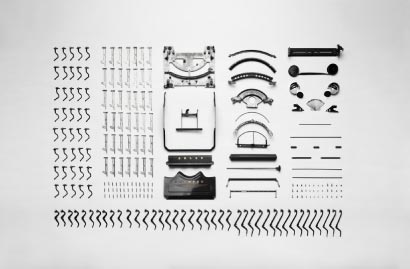Card processing costs can be a little complicated without knowing the basic pricing models these fees pass through. Last time, we explored the fees you may see on your merchant statement. In this installment, we will look at the main pricing models that are used to pass on interchange and other fees to merchants. The main pricing models you will likely encounter are Cost Plus, Tiered and Flat Rate. Each has pros and cons depending on the size of your organization and the industry you are in.
Cost Plus
If you process a lot of rewards cards (cards that earn flight miles or other benefits) or business cards (cards setup for corporate purchasing where the cardholder is not the direct account holder), this model is a good solution, since these card types often fall into a higher rate in a tiered structure (see below). The Cost Plus model charges you interchange (the cost established by the Card Associations) plus a set percentage markup. The markup is tracked in “basis points” (a basis point is equal to one hundredth of a percentage point). There are over 650 interchange categories, each with a specific cost. The primary factors for determining a transaction’s interchange category are merchant type, the type of card used, data elements (like AVS information or invoice number) sent with the transaction, processing method (swiped, keyed, internet), and the timing between the authorization and the settlement. With all these factors in play, the most obvious drawback to this pricing structure is a more complicated merchant statement.
Tiered Pricing
The Tiered Pricing model puts each interchange category into one of five buckets: Qualified, Mid-Qualified, Rewards, Card Brand and Non-Qualified. This is a much simpler model than Cost-Plus.
- Qualified is the best price-point and is only available on retail accounts (or card-present environments where the card is swiped).
- Mid Qualified is where downgraded swipe transactions fall, and where eCommerce or Mail Order/Telephone Order (MOTO) transactions start. However the starting keyed rate for Internet/MOTO accounts is lower than the downgraded retail rate.
- Rewards cards provide cardholder benefits like airline miles and fall in their own bucket. Some merchant services providers downgrade rewards cards to the higher Non-Qualified rate instead of separating them out, so be sure to check into this if you get many rewards cards.
- A Card Brand tier is seen when a Card Association that would otherwise process their own transactions exclusively, but have integrated with a processor for settlement and billing (Discover for example). The processor can choose to put these transactions in a bucket of their own, or group them into one of the other buckets.
- Non-Qualified transactions are charged the highest rate. These transactions are the higher risk and include international and corporate cards, or downgraded transactions from one of the other tiers.
When a transaction does not hit the best possible rate, it is known as a downgrade. For example, when a transaction would normally be Qualified but you waited too long to settle your batch on the terminal, the transaction is downgraded to the Mid-Qualified bucket instead. Common reasons for a downgrade are not settling within 24 hours, keying in a transaction instead of swiping on a retail account, not sending address information with an internet transaction, etc. A surcharge is the additional fee that is charged (i.e. the amount charged based on the difference in percentage between Qualified and Mid-Qualified.
Avoid the “retail trap”: The lowest rates for card processing is without a doubt with a swiped retail account. These face-to-face transactions have the lowest risk since the card is present and the card holder’s signature can be verified. Many merchant service providers are quick to offer you a low quoted rate to get you to sign up with them, however the trap is that as soon as you key in the transaction, these retail accounts will downgrade to a much higher rate. If you aren’t in a position to swipe a card, then you will want to setup a MOTO or eCommerce merchant account. While these accounts do have a higher base rate than swiped retail account, they start much lower than the downgraded rate on the retail account. If most of your transactions are not with the card present to swipe, then those would all downgrade on a retail account. When looking at a quoted rate, make sure you find out if that is a swiped or keyed rate before signing the paperwork. You don’t want to get surprised with a bunch of downgrades on your statement.
Flat Rate Pricing
The simplest to understand of the the three main pricing models is the Flat Rate model. The Flat Rate model groups all the interchange fees into one flat rate. This rate is usually higher than a traditional quoted tiered rate, however, the higher rate is offset by lower monthly fees, fewer incidental fees and much simpler reconciliation. Some merchant services providers include product fees for your payment application/software along with a flat rate pricing which further simplifies your billing, combining both the processing and products on one statement.
—
Image Credit: bancardsales.com

